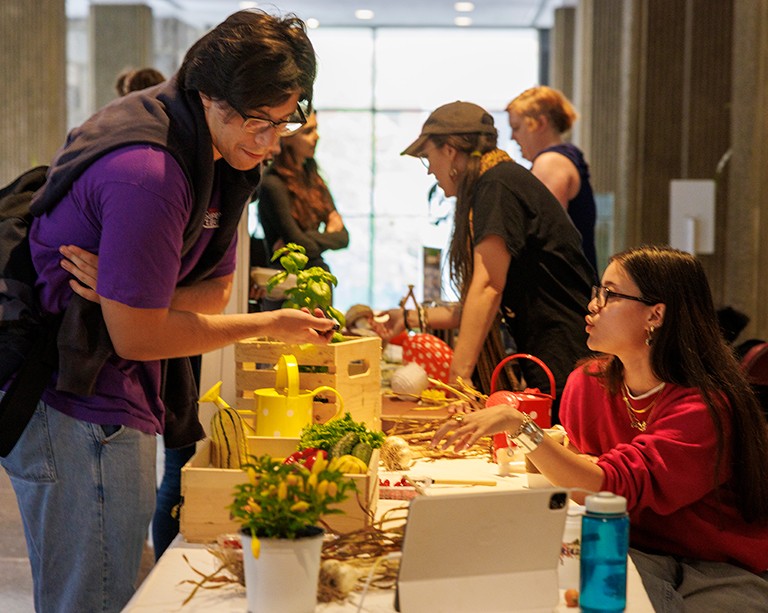Development of mass communication in Canada's North has been a form of resistance

Over the course of more than 40 years that the Canadian federal government has exerted its influence over mass communication in the Far North, northern voices have often struggled to make themselves heard.
And yet, despite often lacking the technology and resources available to culture makers in the Canadian South, Indigenous communities have been able to create their own media landscape that is ground-up rather than top-down.
In a paper published this spring in the journal Development In Practice, Lorna Roth, a recently retired professor in Concordia’s Department of Communications Studies, reflects on that struggle, and proposes measures that could be taken to strengthen those northern Indigenous voices. The article was written in collaboration with Patricia Audette-Longo, Roth’s former PhD student.
Roth points out that Ottawa only started taking the idea of improving communications between the North and South seriously in the late 1960s, and then mostly at the urge of commercial and resource extraction interests.
In 1972, Telesat launched the first Canadian domestic communications satellite Anik A1, and the federal government began connecting northern communities via satellite dishes.
“But some people in the Arctic and northern Quebec did not want national television before they had local television,” says Roth.
“They wanted their voices to be heard, they wanted their culture to be reflected before they had a national culture imposed on them. It was an issue of identity promotion and they persisted in keeping their perspectives.”
Because Indigenous northern peoples made up such a small percentage of the overall population, providing them with the infrastructure necessary was not a top priority for Ottawa.
It took years of resistance and persistence by the Indigenous peoples — buying their own satellite dishes, for instance, to access content not authorized by Canadian authorities or the CRTC — before Ottawa relented. In 1981, the federal government began to develop the infrastructure necessary for northern communities to develop their own programming.
However, the advent of the Internet age has presented its own unique challenges. Because Internet access is still not yet considered a universal service or legal norm like telephone, radio or television access, Internet connectivity remains problematic in many regions in the North outside of major urban areas.
While more media is consumed online than ever, the Canadian Internet infrastructure is by and large privately owned. This presents a significant obstacle to online access, says Roth.
“No one was going to put the money into the infrastructure in a community that was small and was not going to make them a profit, and the federal government was not going to fund it as a public service because it was too expensive,” she says.
“So, it went into the private sector, and the private sector felt that they weren’t going to make enough money.”
Moving ahead with content
Efforts are under way to increase access to the Internet in Canada’s north, but communities are not waiting to produce high quality programming.
Roth notes that initiatives like Isuma.tv, a website that hosts content made by Indigenous makers from around the world, are ongoing, even if the content is far easier to watch for southern audiences than northern ones.
Indigenous communities are also overcoming that, she notes, by uploading Isuma.tv content to local servers that are accessible to the community.
Roth concludes that the history of the development of mass communication in the North has been, for the Indigenous communities, one of resistance to outside control of communications and persistence in getting their voices heard.
While both approaches can be appropriate, says Roth, “resistance is limited. It puts power in the hands of others who define the parameters of what can or can’t be done. If you are living in a community where you want to have your say on an equity basis, you have to resist the powers that be and create an opposition that is persistent enough to finally get your point into the mainstream.”
"Cultural persistence points to a community finding solutions on their own terms, not anyone else's,” adds Audette-Longo. “For those who work in development, policy-making, and media-making, the importance of understanding and thinking through this concept lays in opening up the terms of engagement and listening to communities first, before determining the work, policy or product that needs to be completed."
Roth is hopeful that Indigenous communities and Canadian authorities can reach an amicable solution to the long-term challenge of Northern inclusivity.
What would help, she says, is for both sides to engage in what she calls “diplomacy aesthetics” — the ability to take into account the cultural context in which they’re going to receive the idea.
It’s an intelligent, considerate, trusting and respectful way of communicating that adopts the emotional aura of the people or the group that you’re engaging with. And it works.”
Read the published article: “Co-movement revisited: reflections on four decades of media transformation in Canadian Indigenous communities”.
Contact
Public Affairs
514-848-2424, ext. 5068
patrick.lejtenyi@concordia.ca
@ConcordiaUnews


